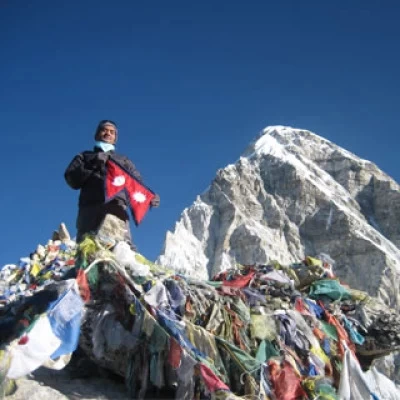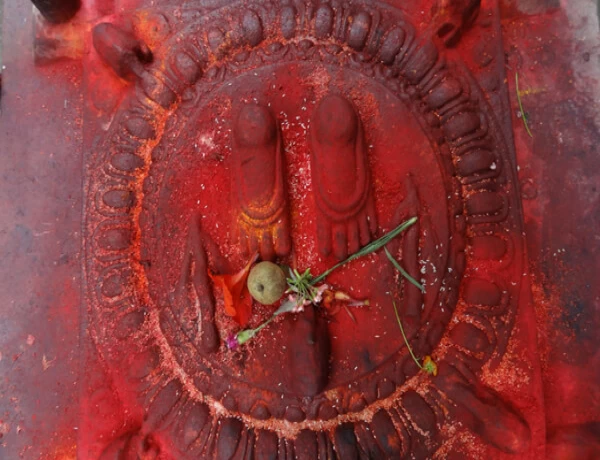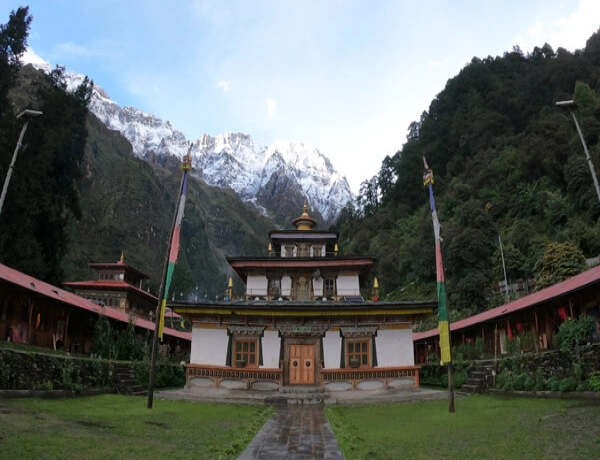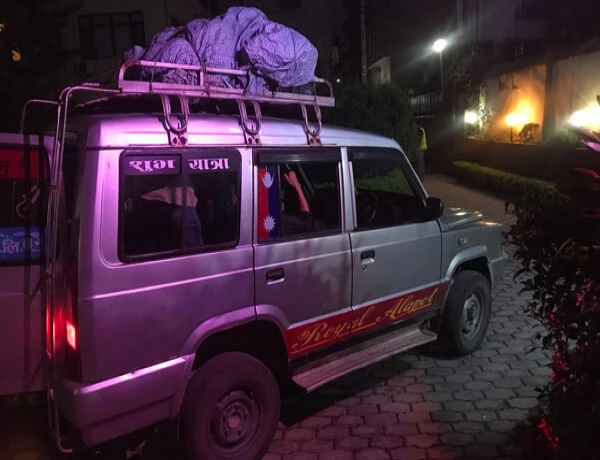What is Everest Base Camp?
The base camp is the basic temporary tent site for the climbers, where they begin the mountain expedition. The Everest Base Camp (South Col) is situated at the foot of the Khumbu Icefall. It is no ordinary base camp; it is the base camp at the top of the world.
Trekking to Everest Base Camp is not just normal hiking. The trek leads to the most iconic mountain, Mt. Everest. If you are reading this, you for sure want to seek the adventure that Everest offers. And yeah! It is waiting for you.
Although Mount Everest has two base camps (in Nepal and China), the trekking route is only available in Nepal. So, we will be talking about complete tips and guidelines on trekking.
Without further ado, let's get right into the topic.
Everest Base Camp Trek Highlights
- Hike through Sagarmatha National Park.
- Rewarding landscape and view
- Namche Bazaar and Lukla—Sherpa towns
- Tengboche Monastery
- Kalapatthar viewpoint
- The base camp of the world's highest peak.
- Hillary Museum at Namche Bazaar
- Experience Sherpa culture, tradition, and hospitality.
Everest Base Camp Trek Summary
Highest elevation: 5,644 meters
Lowest elevation: 2,610 meters
Mount Everest's height: 8,848.86 meters
Trekking distance: 125 Kilometers
Total days: 14 days
Everest Base Camp Height.
The height of Everest Base Camp is 5,340 meters. It is the southern base camp located in Nepal. The northern base camp is located in Tibet at a height of 5,200 meters.
Where is Everest Base Camp?
The Southern Everest Base Camp is located in the Solukhumbu district, Province 1 of Nepal. Also, inside the Sagarmatha National Park.
The Northern Base Camp is located in Tibet, near Rongbuk Monastery. The location where tourists visit is ‘Tourist Base Camp,’ but the actual base camp for climbers is at the beginning of Rongbuk Glacier.
How do I go to Everest Base Camp?
Well! The northern Everest base camp has road access. Vehicles can go up to Rongbuk Monastery. Afterward, travelers are required to hire horse carriages or small buses. The Chinese government has implemented this rule to reduce traffic.
On the other side, Southern Everest Base Camp is possible by trekking or through a direct helicopter tour. Mostly, travelers prefer trekking. Helicopter tours are more expensive. So, trekking can be an ideal choice.
The trek starts from Lukla. It can take 6–9 days to reach the base camp, depending on how you ascend.
Moreover, Lukla has a couple of means of access, which are by air or by road. It takes 30–45 minutes to fly to Tenzing-Hillary Airport; meanwhile, it takes whole day to reach Surke (a village below Lukla) on the road by Jeep.

Everest Base Camp Trek Route
The trekking trail to Everest Base Camp is only regulated in Nepal. The trek starts with the scenic flight from Kathmandu to Lukla, Tenzing-Hillary Airport. Then, the trekking starts from Lukla.

The trail passes through the famous Sherpa town, Namche Bazar. Tengboche, where the centuries-old monastery is located. As the trek goes further, it goes to upper settlements like Dingboche, Lobuche, and Gorakshep.
Normally, the trek consists of 11 days on a trekking route. Two of these days are specifically set aside for acclimatization. The trek allows hiking through Sagarmatha National Park.
Gorakshep is the last stop of the trekking route. It has access to both Everest Base Camp and Kala Patthar. One carries the history, whereas another offers the panoramic view of the Mahalangur Himalayan Range, along with Mt. Everest.

You Should Know the Difficulty Level of Everest Base Camp Trek Before Starting
The Everest Base Camp trek is neither hard nor easy. The difficulty level of the trek is moderate. Rapidly gaining altitude on the trail has led lots of trekkers to suffer from altitude sickness. Which has made travelers believe that the trek is hard.
If you try to finish the trek before 12 days, it might get hard. The trek itinerary is itself well-prepared in addition to acclimatization days. The itinerary is designed with the aim of a pleasant trek.
The determination to conquer the base camp at the top of the world will eventually make your trek successful. So, make up your mind before trekking.
Not gonna lie, if you are prepared and acclimatize as required, then the trek is just a piece of cake.
Is Everest Base Camp Trek for Beginners?
The Everest Base Camp trek can be fearsome for beginners. But with great preparation, you can be an expert in this trekking. If you are a beginner, many things can be new to you. There might be a lot of things you should learn to adapt to.
If you are a beginner hiker, you may think it can be a tough trek, but there are other harder trekking routes. Don’t get the wrong idea; sometimes the situation can get ugly. You should be concerned about altitude sickness. Don’t escape acclimatization day.
Take your time, walk at your own pace, acclimatize well, consume more carbohydrate foods, pack only essential clothes and gear, and hire a guide or porter/concerned local agencies.
Always believe in yourself. Keep in mind that a strong mentality and being well-prepared are the keys to unlocking successful trekking.
How about altitude sickness at Everest Base Camp?
Everyone should be conscious of altitude sickness on the Everest Base Camp trek. The case can be mild to critical. The normal condition can be cured, while the critical condition needs health support or may need to be rescued. It has been the number one reason to screw up your trip.
When you go to a higher altitude, the atmospheric pressure is relatively low, as is the oxygen level. If you go to a higher altitude than you are used to living in, then altitude sickness can strike you.
The symptoms of high altitude sickness include headache, shortness of breath, loss of appetite, dizziness, nausea, loss of energy, and more. It is frightening but can be prevented. Acclimatization is the best prevention for altitude sickness. Also, staying hydrated and having a proper diet can be plus points.
Everest Base Camp Trek Suggested Itinerary
Normally, the Everest Base Camp Trek is 14 days long from arrival to departure. However, the days spent in the trekking area are 11 days.
However, the itinerary can depend upon the travelers. The days may vary from 10 to 15 days. Here, we have provided a common outline for the Everest Base Camp Trek itinerary:
Day 01: Arrival in Kathmandu: -1,400 m.
Day 02: Fly to Lukla and trek to Phakding (2,610 m).
Day 03: Trek to Namche Bazar (3,430 m).
Day 04: Acclimatization day | Visit Khumjung village -3,790 m.
Day 05: Trek to Tengboche -3,867 m.
Day 06: Trek to Dingboche (4,410 m).
Day 07: Acclimatization day | hike to Nangkartshang peak -5,121 m.
Day 08: Trek to Lobuche (4930 m).
Day 09: Trek to Gorak Shep-5140 | Hike to Everest Base Camp: -5,364 m.
Day 10: Morning hike to Kala Patthar (5644 m) | trek to Pheriche (-4240 m).
Day 11: Trek to Namche Bazar -3,430 m.
Day 12: Trek to Lukla (2,800 m).
Day 13: Fly back to Kathmandu (1,400 m).
Day 14: Back home.
Everest Base Camp Trek by Road (without Flight) 14 Days - Video
Everest Base Camp Trek Duration
The normal duration of Everest Base Camp is 2 weeks. Also, it can depend on the trekkers. Sometimes it can be over 2 weeks and sometimes it can take less than 10 days.
Daily, the duration of the walk is 5–6 hours on average. The shortest day of the trek can be 2-3 hours, while the longest can take 7-8 hours of walking.
Know the Everest Base Camp weather and climate and choose the best time.
The weather at Everest Base Camp is always unpredictable. And it usually stays cold all year. But the climate changes on Everest according to the season.
It is always cold in base camp, even in the summer season. In the winter season, the temperature can go below -20°C. Lower air pressure and a low level of oxygen result in cold weather all the time.
Spring and autumn seasons are pinned as the best throughout the year. The sky is always clear, and the view gets even better. But, as I said before, the weather is unpredictable. Anything can happen in the blink of an eye.
Everest Base Camp Trek Distance
The trekking distance from Lukla to the base camp is 65 kilometers. A trekker travels about 125 kilometers in total (both ways).
The distance from Kathmandu to Everest Base Camp is 155 kilometers.
Everest Base Camp Trek Route Map
Everest Base Camp’s map is one of the easiest maps to read. Here we have a detailed map:

Elevation of Everest Base Camp
The elevation of Everest Base Camp is 5,364 meters (17,598 ft). The highest elevation of the trek is Kala Patthar at 5,644 meters (18,519 ft). Likewise, Phakding has the lowest elevation of 2,610 meters (8,563 ft). Here is the chart of elevation en route:
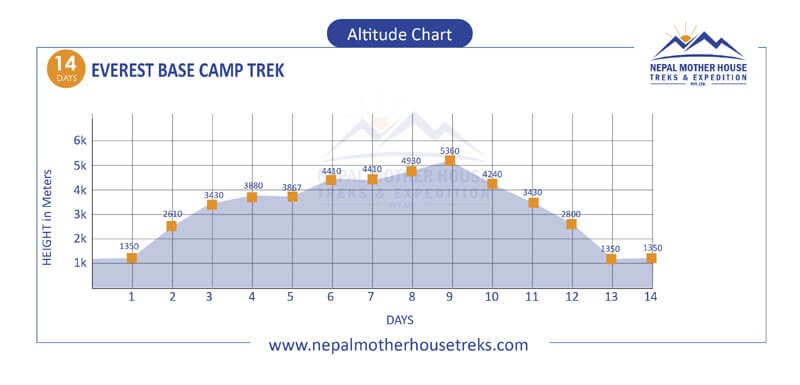
Best time to visit Everest Base Camp
There are four major seasons in Nepal. The best time to visit Everest Base Camp is in the spring and autumn. It is the time when the weather gets pretty amazing, and the sky gets clear. With a clear sky, the view gets more rewarding.
The remaining two seasons are the monsoon and winter seasons. In the monsoon, it is all about rain and storms. Clouds frequently block views. In winter, the weather gets colder than in other seasons. Plus, snowfall makes trekking more complicated.
But it does not mean that it is impossible to trek. For some reason, the winter season can be the best because the crowd gets thinner in the off-season. Also, the sky gets clear in December.
What Should I Pack for the Everest Base Camp Trek?
Everest Base Camp's packing list consists of fundamental equipment and gear like down jackets, warmer trousers, trekking boots, sunglasses, and much more.

It would take a long time to mention all of those packing lists. So we have made a packing list for the Everest Base Camp Trek. Feel free to check it out.
How Many Permits Are Required for the Everest Base Camp Trek?
The trek requires a couple of permits. But like other trekking trails, it does not require a Trekker's Information Management System (TIMS) permit.
The Everest Base Camp trek requires two permits, which are
- Sagarmatha National Park Permit: The permit can be obtained from the Nepal Tourism Board office (Kathmandu) as well as from Monjo (Khumbu) at the entry of the park. It cost NPR 3,000 ($30).

- Khumbu Pasang Lhamu Municipality Entrance Permit: It can only be obtained from Lukla or Monjo. The cost of "Trek Cards" was NPR 2,000 ($20) per foreign traveler. It is a substitute for a TIMS card. But recently, the local government, "Pasang Lhamu Rural Municipality," changed the Trek Cards fee on July 17, 2024. The updated cost is Rs. 3,000 for trekkers, except Chinese and SAARC, Rs. 2,000, and below ten years, children and diplomats no longer need to pay for the cards.

Note: If you are trying to follow the classic trail from Jiri to Everest Base Camp, it requires another permit from the Gaurishankar Conservation Area. It can be obtained from the Nepal Tourism Board office in Kathmandu. For more details about the trekking permit fee in Nepal, kindly go through the link.
The best Trekking route to Everest Base Camp
There are multiple trekking routes to Everest Base Camp. If you want to have a short way, then the classic trail from Lukla (direct flight from Kathmandu) is the ideal choice. But if you want it long and want to discover more of Nepal, then there are other alternative routes too.
The Everest Base Camp hike via Jiri is another famous trekking route. You can enjoy the beautiful scenery of Jiri, but it can cost you an extra week to travel. Likewise, there is another route from Tumlingtar passing through the Arun Valley. Likewise, nowadays there is a Jeep available from Kathmandu to Thamdanda (4–5 hours of walking can get you to Lukla) every day. So, if you are looking for an Everest trek without a Lukla flight, then a 14-day Everest Base Camp trek by road would be best for you. This itinerary helps to reduce the trip cost, provide a risk-free flight from weather conditions, and give them a chance to acclimatize well before getting to base camp.
The remaining option is the trek from Salleri to Everest Base Camp. The trek starts with the long drive from Kathmandu to Surke via Okhaldhunga. The trail passes through Ringmu and Kharikhola, then to Lukla.
Is there a direct flight to Lukla? Why the Lukla flight diversion to Ramechhap?
It is a rare case when the Lukla flight is diverted to Ramechhap (Manthali Airport). This is particularly common during the peak season, such as October, as a result of heavy air traffic and the ongoing construction of the TIA Domestic Terminal.
In the case of a flight diversion to Ramechhap, you need to reach Ramechhap from Kathmandu and take a flight to Lukla. It takes around 3–4 hours to drive from Kathmandu to Ramechhap. From Manthali Airport, it takes around 15–20 minutes to reach Lukla Airport.

Accommodation in Everest Base Camp Trek
Have you ever wondered what accommodation looks like in the Everest region? The standard of the accommodations might surprise you. Everest Base Camp has the finest accommodation.
The bedrooms and dining hall are at the top of the game. The hotels are clean, and the staff is well-groomed, including great Sherpa hospitality.
Remarkably, you can experience 5-star luxury service in the Himalayas. Yeti Mountain Home has been providing exclusive services. Likewise, Everest View Hotel is also targeting the same ambition.
Furthermore, if you are searching for budget hotels, there are numerous choices to choose from.
The rooms are usually twin rooms. If you want a single room, it is possible to get one in lower settlements. But as you go to higher places like Gorakshep and Lobuche, it can get hard to find one. You may have to share a room.
To be honest, the hotels in Lobuche and Gorak Shep have a pretty decent standard. Making a hotel at such an elevation is tough. Also, the number of hotels is limited.
In peak season, you might have to spend a night in the dining hall. But you can take advantage because the dining hall is warmer than regular rooms due to the fireplace.
Food and drinking water During the Everest Base Camp trek
The Everest region is the most developed trekking trail. The food service is also at its best. Namche Bazar and Lukla have some of the finest food and beverage outlets on the route.

The renowned Irish pub is also franchised in the Himalayas. You can enjoy quality food and drinks along with the majestic view. Namche Bazar and Lukla have the best restaurants to fulfill your appetite.
Now, let's dive into the food that is available during your regular hotel stay. You can enjoy your favorite treat in Gorak Shep too. Every hotel has a wide variety of menus to choose from.
Usually, foods are freshly made. You can have a wide option for typical Nepali food like Momo, Dal-Bhat, snacks, etc., as well as continental foods like Sizzler, spaghetti, pizza, etc. Avoiding meat products in higher places can be a wise choice.
Talking about drinking water, you can find multiple safe drinking water stations throughout the route. One liter of water costs around $1 to $5, as it is expensive in the upper places. Since the Khumbu authority has banned plastic bottles in the Everest region, you have to bring your bottle.
Drinking water is highly recommended while trekking. You should consume 3–4 liters of water daily. And always stay hydrated.
You can bring a water purification tablet because tap water is not reliable. Also, the bottle with a filter is very helpful during the trek if you want to save some bills. Boiled water is the best and safest water in the Himalayas (boiled water costs more than regular water). You can get boiled water in every hotel you stay in.
Mount Everest Base Camp Trek: Essential Tips and Information for Your Successful Trip on the Base of the World “Mt. Everest 8,848.86m”
Here is a list of some tips that will help make your trip successful. Kindly go through it.
- Experience the Ultimate Everest Base Camp Helicopter Tour: A Comprehensive Guide
- Daily Bus and Jeep Service from Kathmandu to Lukla: Private and Shared Options Available
- 7 Money-Saving Tips to Enhance Your Everest Base Camp Trek Experience
- 14-Day Everest Base Camp Trek Itinerary: A Step-by-Step Guide for a Memorable Journey
- Unlocking the Secrets of Everest Base Camp Trek: Top 7 Insider Tips You Need to Know
- 30 Mind-Blowing Facts About Mount Everest: Discovering the World's Tallest Mountain
- 15 Essential Tipsfor a Safe and Enjoyable Trek to Mount Everest Base Camp
- Lukla Airport: Your Gateway to the Top of the World Adventure
- Where is Mount Everest Located? Exploring the Geographic Wonder of the World
- The Best Time to Trek to Everest Base Camp: A Guide to Choosing the Perfect Season
- Everest Base Camp Elevation: What You Need to Know Before You Go
- How Much Does an Everest Base Camp Trek Cost? A Breakdown of Expenses and Savings Tips
- Getting to Everest Base Camp: A Comprehensive Guide to Transportation and Routes
- Your Ultimate Everest Base Camp Trek Packing List: Essentials and Recommendations
- Kalapatthar: Experience the Best Views of Mount Everest on Your Trek
- Understanding Flights from Kathmandu to Lukla: Why Departure from Ramechhap is Recommended
Electricity and Wi-Fi service on the Trek
The Everest Base Camp trek has electricity service to Gorak Shep (5,164 meters). Every place in the Everest region has electricity access. You can charge your mobile, power bank, or other portable devices, but it can cost extra.

Villages that are located at lower altitudes use hydroelectricity. Whereas in the upper villages, they rely on solar energy.
You can have Wi-Fi service too. Now, you can connect to the world while spending quality time in the Himalayas. Everest Link has been providing Wi-Fi services. They sell two varieties of internet packages:
- 10 GB - NPR 1999 ($18)
- 20 GB - NPR 2999 ($26)
Both are valid for 30 days. It works throughout the route, but the hotels should have an Everest Link connection.
Likewise, they have another Wi-Fi package of 600 MB with NPR 600 ($6), but it only works in the respective hotels.

Can you trek to Everest Base Camp without a guide?
Yes! You can trek to Everest Base Camp without a guide. The route is not confusing and is easy to follow. You don’t require a guide, but it is recommended. Everything is uncertain in the Himalayas. Now, you can hire a guide and porter from Lukla as well.
The way is easy as well as well-maintained. Porters and tour guides are inundating the route. You can ask for directions without any hesitation. Generous people will be there for your help.
As we said, everything is uncertain in the Himalayas. You should be alert for altitude sickness and food poisoning. Even minor injuries can be critical. So, a guide can be handy in those situations.
Can I fly by helicopter from Everest Base Camp?
A helicopter tour to Everest Base Camp is comparatively more expensive than regular trekking. Also, it is the fastest way to explore the Everest region.
There are lots of helicopter tour packages to offer. Moreover, it can be customized as you wish. Among them, the Everest Base Camp Trek and flying back by helicopter are the most preferred by travelers. You can check more details by clicking the link.

Furthermore, you can take a helicopter tour of the Everest View Hotel. If it has to be a trek, then it can take 3–4 days to reach there. But with the helicopter, you can reach your favorite spot in a few hours.
Estimate the Everest Base Camp Trek Cost
The Everest Base Camp trek cost is pretty flexible. The price of the trek depends on the number of days and services you choose. Likewise, how much luxury you want on a trek can make a big difference. If you choose a normal package from local agencies, it can cost around $1,200 to $1,600.
If you are fit and love to travel independently, then you can complete the trek starting at $700. Similarly, if you want a high-end trek, it can cost over $5,500. If you book the Everest Base Camp Trek package in advance, then the cost will be cheaper. So, you can book a trek for autumn (September, October, and November) in 2024 and the spring season (March, April, and May) in 2025.
Is the Everest Base Camp Trek worth it?
Everest Base Camp has the best trekking route, along with the best panoramic view. The accommodation is the best, as are the food services. If you want to spend a couple of weeks on vacation with quality time, then yes, the Everest Base Camp Trek is worth visiting.
However, human-made traffic is the only thing that can disappoint your expectations. A large number of trekkers visit the route every year. This is particularly true during the spring and autumn seasons. Mid-November to December (early winter) is the best time to escape the crowd while the number of trekkers is lower.
Overall, human traffic jams cannot stop visitors to this beautiful destination. Have you ever considered visiting Everest Base Camp? Give it a shot. It can be a lifetime experience.
Conclusion
We have talked about the detailed guidelines for the Everest base camp trek, along with some tips. We tried to make it short and include all the necessary information you are trying to search for. I hope our guidelines were helpful to you. Let us know your opinion.
Ever thought of conquering Everest Base Camp? Maybe we can help with that. We, Nepal Mother House, have been providing undeniable services over the past decade. We are always here to help you.

